How to avoid side-light reflectionsUpdated 2 months ago
A side-light reflection is not necessarily a bad thing! Some customers love the light reflections and ambiance they create.
However, if you would like to minimize the side-light reflections as much as possible, please reference below.
What causes the light reflections?
Side light reflections are created when the orange and/or RGB lights (model dependent) reflect off the closest surface. That is usually the side of the hearth and the ceiling of the hearth. We go over how to reduce ceiling light reflections (or light bleed) here.
Examples of side-light reflections:
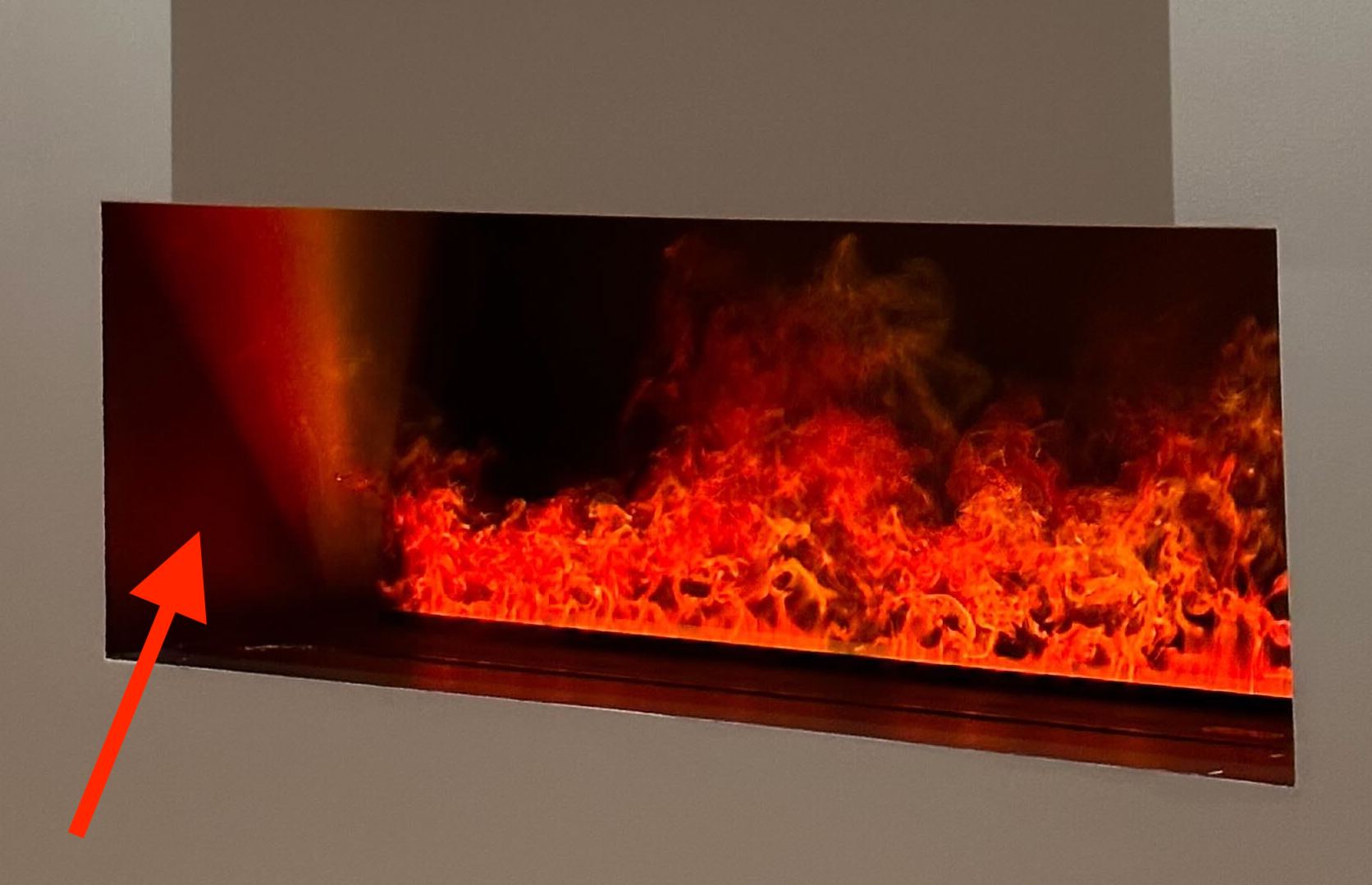
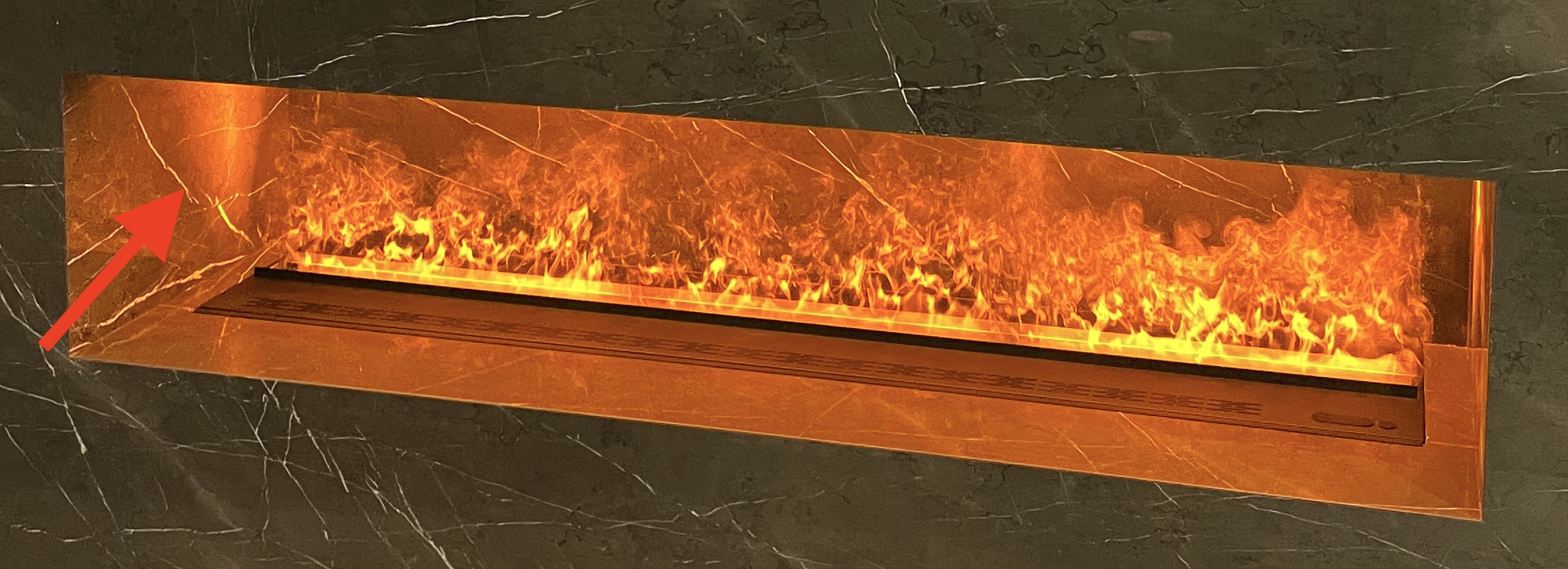
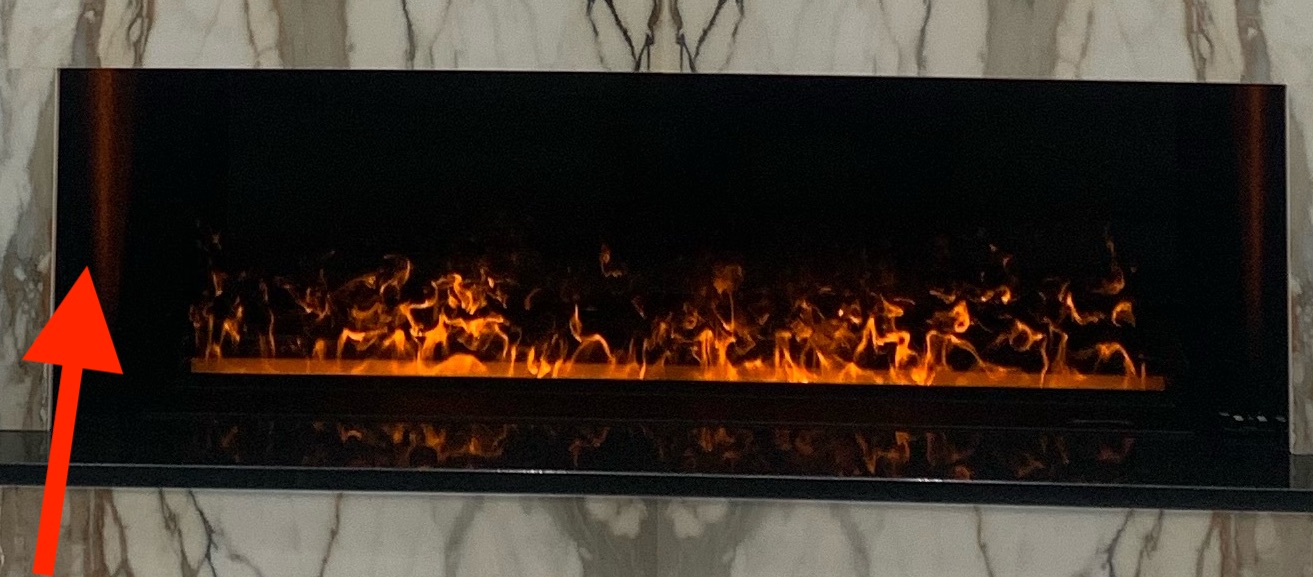
.jpeg)
To avoid this, you'll need 6 inches or more clearance from the edge of the insert to the edge of the hearth wall. The further away the hearth wall, the less light reflection you'll see. Pretty simple!
In practice, this means you'll need to purchase a fireplace insert at least 12" or more shorter than the opening of your fireplace.
- If your fireplace opening is 5 ft wide (60"), we recommend the 40" insert.
- If it is 100" wide, we recommend 2 40" inserts to make 80", etc...
- Please reach out to us with your design plans and dimensions if you still have questions!
Examples of reduced reflections:

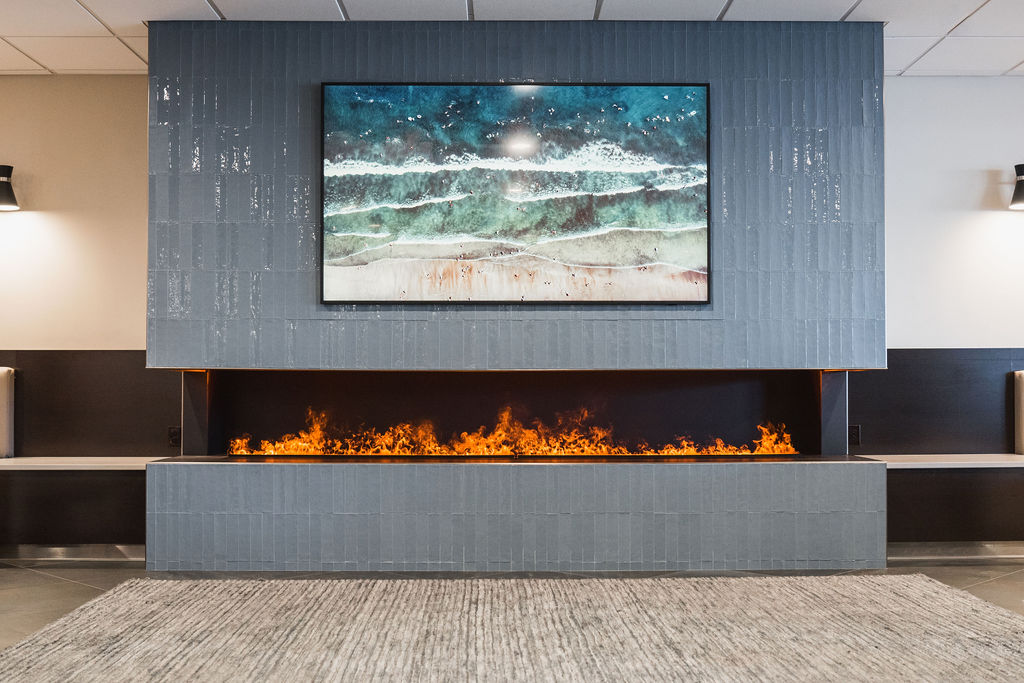
Design can also help minimize side light reflections if you don't have 6" or more clearance on each side.
- Using Dark, Matte, light absorbing Paint in the inside of the hearth can significantly reduce all light reflections within the hearth.
- Using dark reflective materials on the side (and back if desired) can help disguise the side lighting as well. You'll still see the side lighting but the material can diffuse the effect and, in person, the focus is on the vapor flame movement over the actual light reflections.
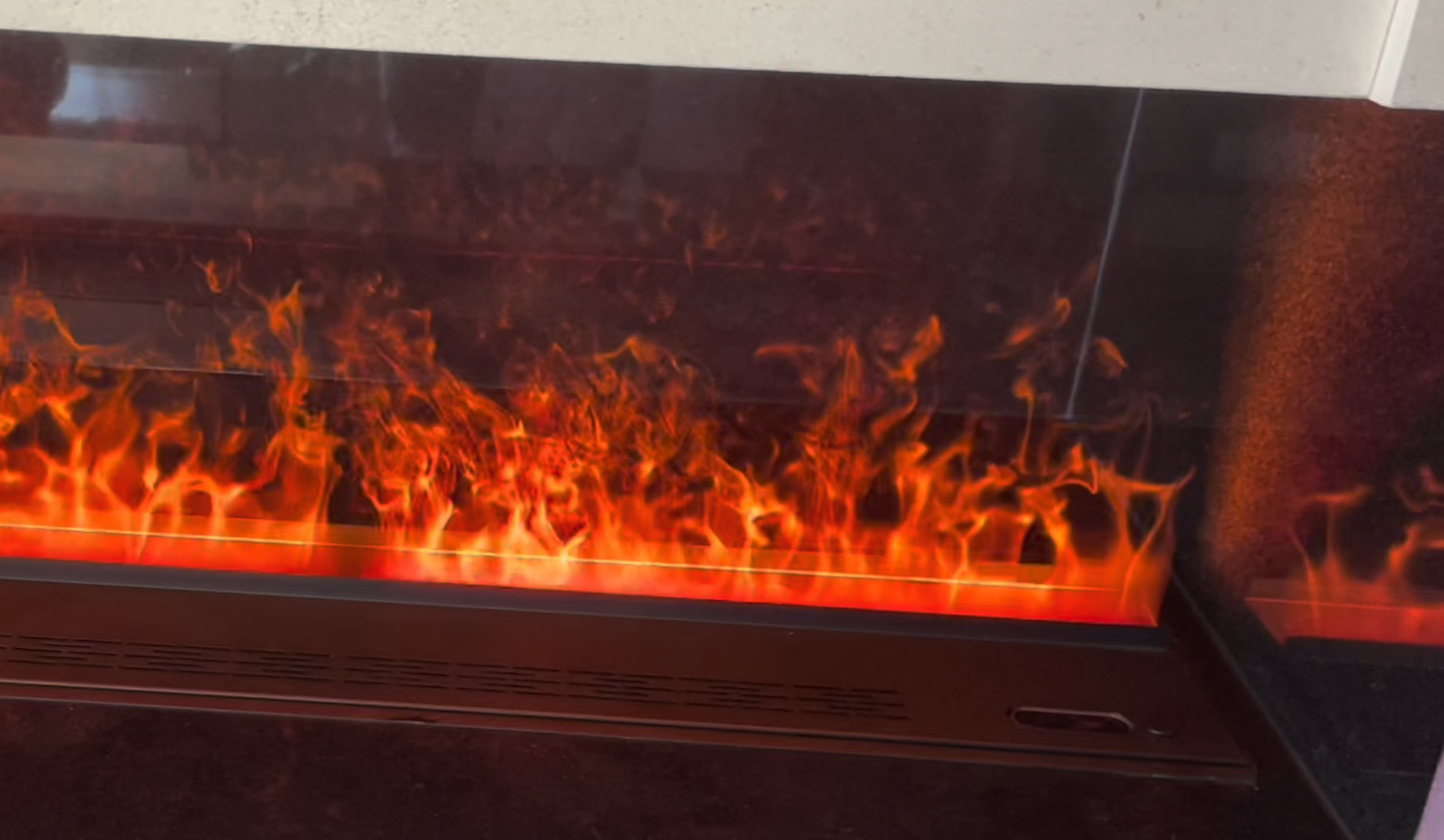
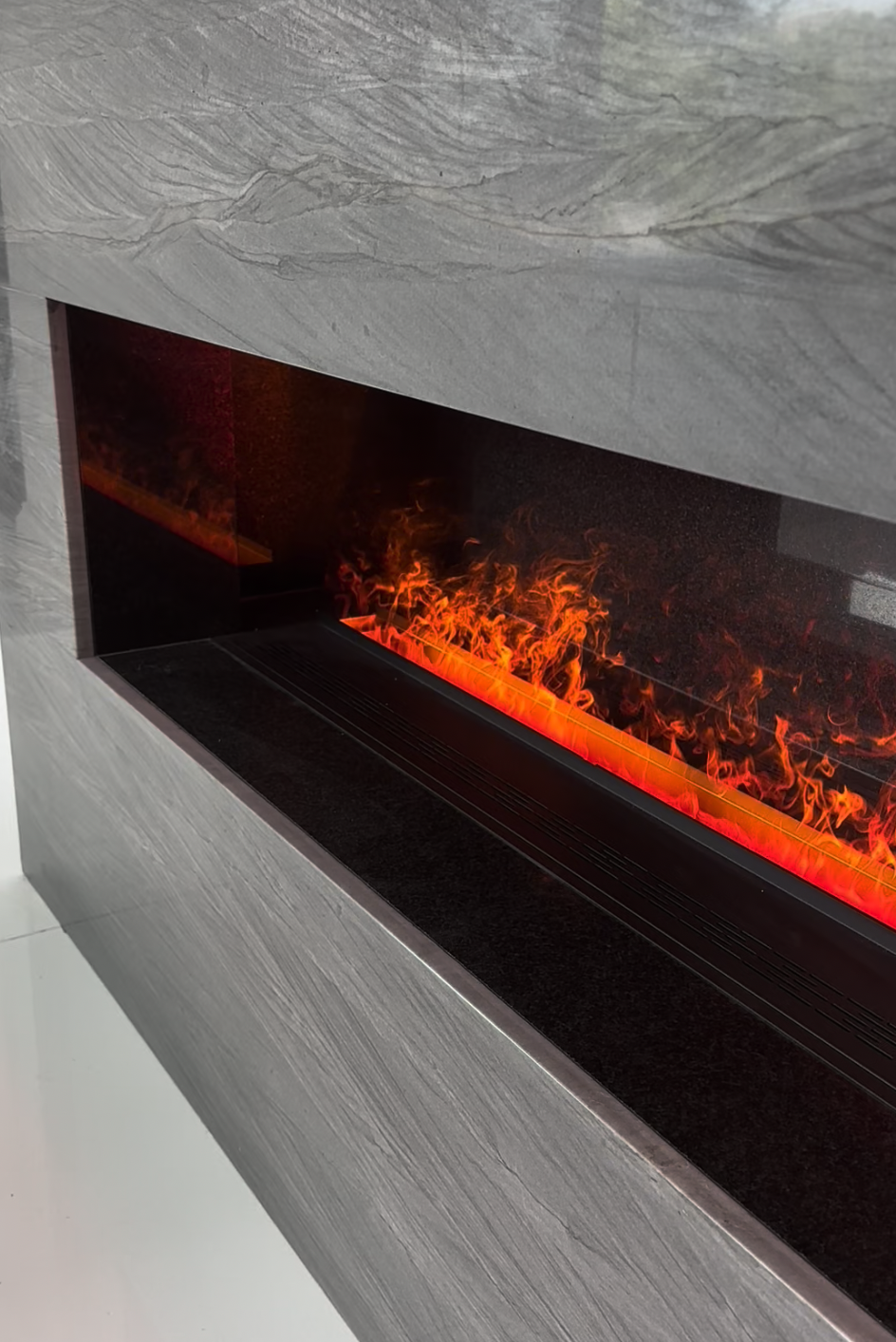
- Finally, a blind corner is an effective way to hide the side light reflections from the head-on viewer.
- Drawing of a blind corner
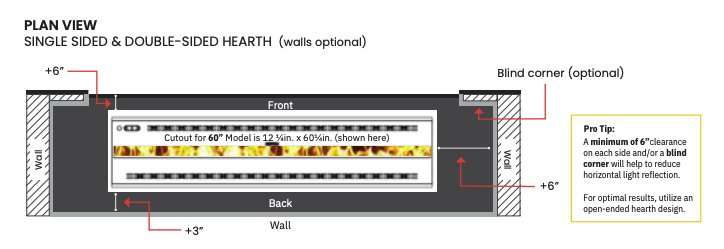
- Real-Life Examples of a blind corner
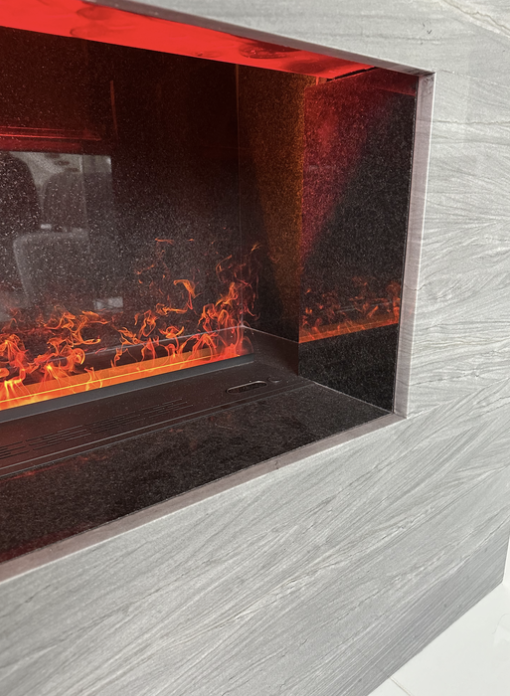
- Drawing of a blind corner